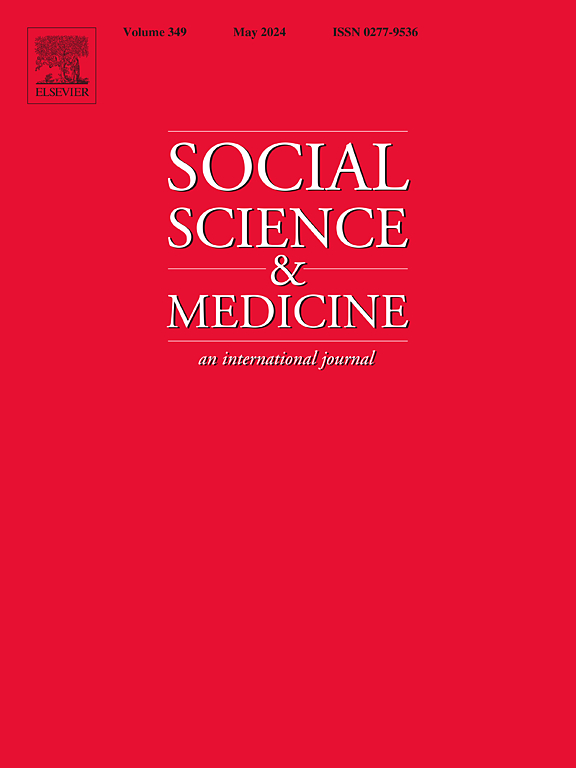Possible explanations for the upward trend in mental distress among adolescents in Norway from 2011 to 2024
IF 5
2区 医学
Q1 PUBLIC, ENVIRONMENTAL & OCCUPATIONAL HEALTH
引用次数: 0
Abstract
Background
An upward trend in self-reported mental distress among adolescents has been documented in Norway and several other countries, yet the causes remain unclear. This study aims to identify potential explanations for this trend by testing hypothesized factors using repeated cross-sectional data.
Methods
We analyzed responses from 979,043 Norwegian adolescents, collected across 1417 municipality level surveys between 2011 and 2024. Eight explanatory factors with prior evidence of association with mental distress were examined: family financial difficulty, evenings spent at home, physical inactivity, bullying victimization, dissatisfaction with parents, social media use, cannabis use, and school dissatisfaction. Following a published epidemiological framework, we assessed changes in prevalence, virulence (strength of association), and the degree to which each factor statistically explained the trend in mental distress.
Results
Mental distress increased significantly for both sexes over time. Increased school dissatisfaction accounted for a large share of the observed trend. Time spent on social media, also explained a part of the trend. Spending more evenings at home and cannabis use contributed modestly. Other factors, including financial difficulty, bullying victimization, physical inactivity, and dissatisfaction with parents, showed limited explanatory value.
Conclusions
The rising trend in adolescent mental distress in Norway appears most plausibly linked to growing school dissatisfaction, with a possible contributory role of social media use. These findings underscore the need for further research into school-related factors and adolescent digital experiences, as well as preventive measures.
2011年至2024年挪威青少年精神困扰上升趋势的可能解释
在挪威和其他几个国家,青少年自我报告的精神困扰呈上升趋势,但原因尚不清楚。本研究旨在通过使用重复的横断面数据测试假设因素来确定这一趋势的潜在解释。方法:我们分析了2011年至2024年期间在1417个市级调查中收集的979,043名挪威青少年的回复。研究人员检查了与精神困扰相关的八个先前证据的解释因素:家庭经济困难、在家度过的夜晚、缺乏体育活动、欺凌受害者、对父母的不满、社交媒体使用、大麻使用和对学校的不满。根据已发表的流行病学框架,我们评估了患病率、毒力(关联强度)的变化,以及每个因素在统计上解释精神困扰趋势的程度。结果随着时间的推移,男女的精神压力显著增加。在观察到的趋势中,对学校不满情绪的增加占了很大一部分。花在社交媒体上的时间也部分解释了这一趋势。在家里度过更多的夜晚和吸食大麻也起到了一定的作用。其他因素,包括经济困难、欺凌受害者、缺乏运动和对父母的不满,解释价值有限。结论:挪威青少年心理困扰的上升趋势似乎与日益增长的对学校的不满有关,而社交媒体的使用可能起到了一定的作用。这些发现强调了进一步研究学校相关因素和青少年数字体验以及预防措施的必要性。
本文章由计算机程序翻译,如有差异,请以英文原文为准。
求助全文
约1分钟内获得全文
求助全文
来源期刊

Social Science & Medicine
PUBLIC, ENVIRONMENTAL & OCCUPATIONAL HEALTH-
CiteScore
9.10
自引率
5.60%
发文量
762
审稿时长
38 days
期刊介绍:
Social Science & Medicine provides an international and interdisciplinary forum for the dissemination of social science research on health. We publish original research articles (both empirical and theoretical), reviews, position papers and commentaries on health issues, to inform current research, policy and practice in all areas of common interest to social scientists, health practitioners, and policy makers. The journal publishes material relevant to any aspect of health from a wide range of social science disciplines (anthropology, economics, epidemiology, geography, policy, psychology, and sociology), and material relevant to the social sciences from any of the professions concerned with physical and mental health, health care, clinical practice, and health policy and organization. We encourage material which is of general interest to an international readership.
 求助内容:
求助内容: 应助结果提醒方式:
应助结果提醒方式:


